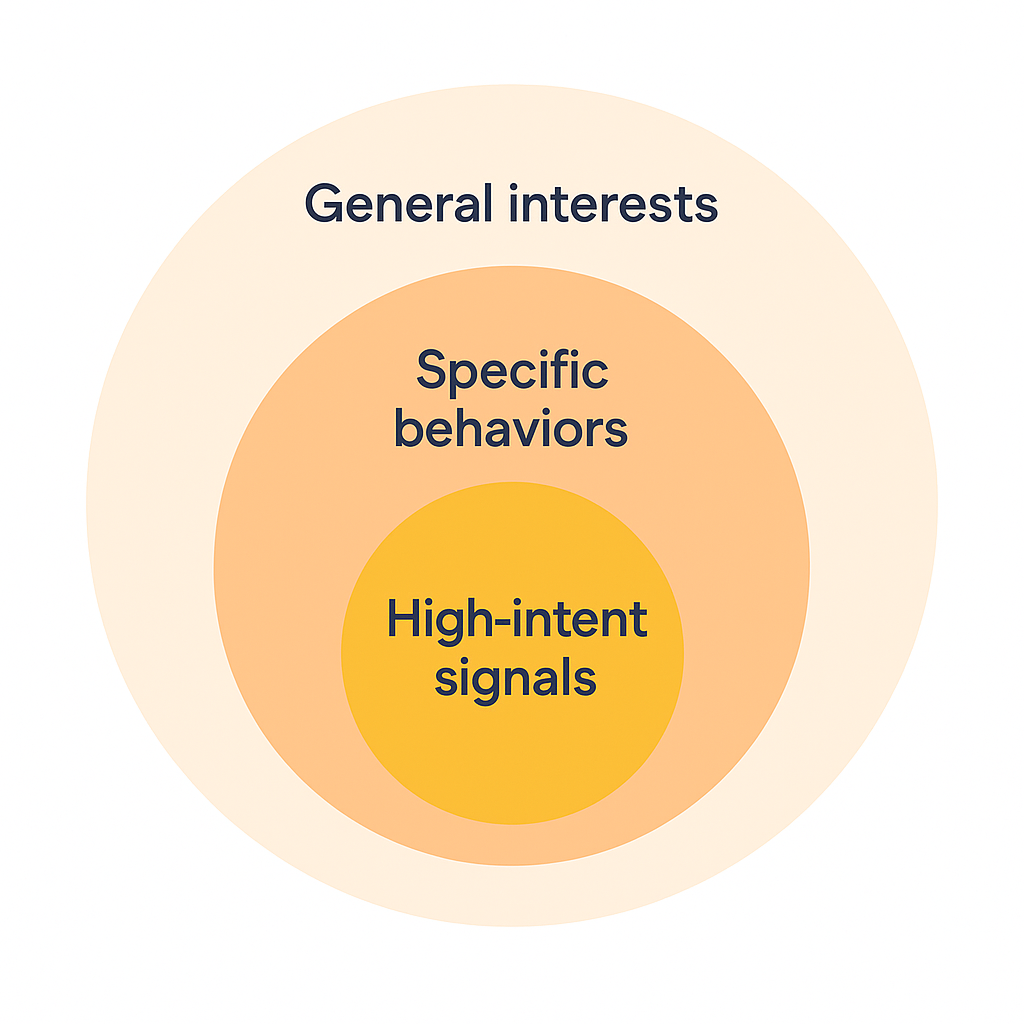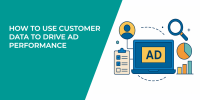Smart marketers don’t throw money at problems — they build lean, high-impact systems that drive results. Whether you’re a startup founder, small business owner, or digital advertiser working with limited resources, your budget doesn’t have to hold you back.
It just needs to be used strategically.
Here’s how to create a marketing strategy that wins — without overspending.
1. Define One Clear, Measurable Goal
You can’t hit a target you can’t see. The more specific your goal, the easier it becomes to reverse-engineer a strategy around it. This is especially important when you’re trying to make the most of a small budget.
| Funnel Stage | Goal Example | Key Metric |
|---|---|---|
| Awareness | 5,000 video views | Cost per view (CPV) |
| Consideration | 300 landing page visits | Click-through rate |
| Conversion | 50 sales or signups | Cost per result |
Ask yourself:
-
What would a win look like within 30 days? Maybe it's 50 leads, maybe it’s 5 purchases — but it has to be defined.
-
Which metric matters most right now? Traffic, clicks, email signups, demos, or purchases?
-
How will you measure success? Use clear tracking tools (Meta Ads Manager, Google Analytics, or UTM links).
When your campaign has a single KPI, you can cut wasted spend and double down on what moves the needle.
This clarity not only makes your campaigns more efficient, but it also helps you communicate expectations with team members or stakeholders. Plus, knowing exactly what you're aiming for keeps you grounded when performance fluctuates in the early days of a campaign.
2. Build an Audience-First Foundation
Your product or service might be fantastic. But if you’re showing it to the wrong people, it won’t matter.

Great marketing starts with deep audience clarity. You need to go beyond basic demographics and think behaviorally:
-
What do your ideal customers do online? What pages do they follow, what influencers do they trust?
-
What specific pain or desire are they dealing with?
-
What language do they use to describe that pain?
Tools like Facebook’s Audience Manager or LeadEnforce let you create laser-targeted audiences. Still unsure who to target? This guide to defining your target audience will help.
Once your audience is dialed in, everything becomes easier: your messaging resonates, your creatives convert, and your ad costs drop. That’s why it's worth spending extra time getting this right before you launch.
3. Start with Channels That Give You Control
Not all channels are budget-friendly. And not all of them let you see what's working fast enough.
Focus your efforts on platforms where:
-
You can pause or adjust daily;
-
You get instant data feedback;
-
You can A/B test creative and offers easily.
Most small-budget advertisers find early traction with Meta (Facebook and Instagram), Google Search, and email. These platforms give you the balance of control and scale you need.
But beware: the wrong setup can kill your delivery. If your ad set is showing "zero potential reach," here’s how to fix it.
Once you choose your core channels, stick with them long enough to gather useful insights because jumping between platforms too quickly is one of the fastest ways to dilute your budget.
4. Use Organic Content to Stretch Paid Reach
Paid and organic work better together. Organic gives you a testing ground. Paid gives you scale.
Here’s how to make them reinforce each other:
-
Turn high-performing posts into ads. Don’t waste money guessing what message works.
-
Build audiences from organic interactions. Retarget video viewers or post engagers.
-
Test content hooks in Reels or Stories before using them in paid creative.
It’s all about momentum. These organic growth strategies can fuel your funnel for free.
Over time, your best-performing content will reveal patterns in tone, visuals, and timing — all of which you can feed back into your paid campaigns to reduce costs and increase relevance.
5. Prioritize Offers Over Ads
The best ad in the world won’t convert if the offer is weak. That’s why budget-friendly strategies always start with the offer itself.
Strong offers are:
-
Simple to understand. You shouldn't need more than one sentence.
-
Valuable. Solve a problem or deliver a quick win.
-
Urgent. Give people a reason to act now (limited time, bonus, or fast action reward).
You can run five variations of ad creative — but if none of them center on a strong offer, you’re spinning your wheels.
Crafting an irresistible offer is often what separates profitable campaigns from wasted spend. If you’re unsure about your offer, test it in low-risk environments (emails, stories, organic posts) before scaling.
6. Build a Simple Funnel (And Diagnose It Fast)
Funnels don’t need to be complex to work. In fact, complexity often hides problems.
A basic funnel gives you clean signals. Here’s one you can build today:
-
Ad: Pull in attention with one idea, one call-to-action.
-
Landing Page: Repeat the hook. One action, one benefit.
-
Confirmation Page or Email Flow: Follow up, build trust, and close the gap.
The advantage? You can fix what’s broken fast. You’ll know if the issue is with the ad, the page, or the offer — and not waste days guessing.
Think of your funnel like a relay race: each step hands off to the next. If someone drops the baton, you need to know where and why, because that level of insight makes all the difference when every dollar matters.
7. Stretch Your Creative — Without Hiring a Studio
Creative matters more than ever — but that doesn’t mean you need studio-grade assets.
What you need is creative that stops the scroll and tells a story fast. Here are some budget-friendly ideas:
-
Use testimonials or review screenshots as visuals.
-
Record quick videos explaining the product. Authenticity > polish.
-
Show transformations. Before/after shots or real use cases.
Pair this with smart use of design tools or AI content generators to stay efficient.
Remember that ads which feel native and real often outperform glossy ones, because people want to see themselves in your creative, and that means leaning into relatability instead of perfection.
8. Retarget Intelligently
Many advertisers waste budget by retargeting everyone. Instead, zoom in on the most valuable behaviors.
Here’s who to prioritize:
-
Video viewers: If someone watched most of your video, they’re likely interested.
-
Add-to-cart abandoners: These users have shown buying intent.
-
Lead form bouncers: They clicked, they considered — but didn’t finish.
Each of these audiences can convert with a small nudge: urgency, clarity, social proof, or a stronger incentive.
The key with retargeting is specificity, so speak to where the person is in their journey. A generic reminder won't cut it, but a timely, personalized message can close the loop.
9. Watch the Right Metrics
If you track everything, you understand nothing. On a small budget, focus on the KPIs that tell the real story.
Your shortlist should include:
-
Cost per result: Are you buying real outcomes or just traffic?
-
Landing page conversion rate: This tells you if your message and offer match up.
-
Click-through rate (CTR): A low CTR often means your ad creative isn’t resonating.
-
CPM and frequency: These tell you if your ad is still efficient or starting to fatigue.
With these metrics in place, you can decide what to kill, scale, or test next.
Be ruthless with underperformers, because every dollar spent on a bad ad is a dollar not spent on a winner. Know your numbers, trust your data, and act fast when performance drops.
10. Test One Variable at a Time
Testing is essential — but it has to be focused. If you change five things in one test, you’ll never know what worked.
Use this order:
-
Creative (first): Headlines, visuals, tone. Start here, since this impacts CTR most.
-
Audience (second): Once a creative works, try new segments.
-
Format (last): Carousel vs. single image, video vs. image, lead form vs. LP.
Each test should run long enough to collect data, but short enough to iterate fast.
Stay consistent in your testing process and resist the urge to change too many things at once, because clarity beats chaos and insight is what drives improvement.
Bottom Line: Constraints Create Better Strategy
Limited resources can be a gift, because they force focus, eliminate waste, and sharpen your thinking.
By anchoring around the right offer, audience, and message, you can do more with $500 than others do with $5,000.
If you test deliberately, track the right metrics, and iterate based on clean data, your strategy won’t just survive budget constraints — it will outperform campaigns running on guesswork and excess.

